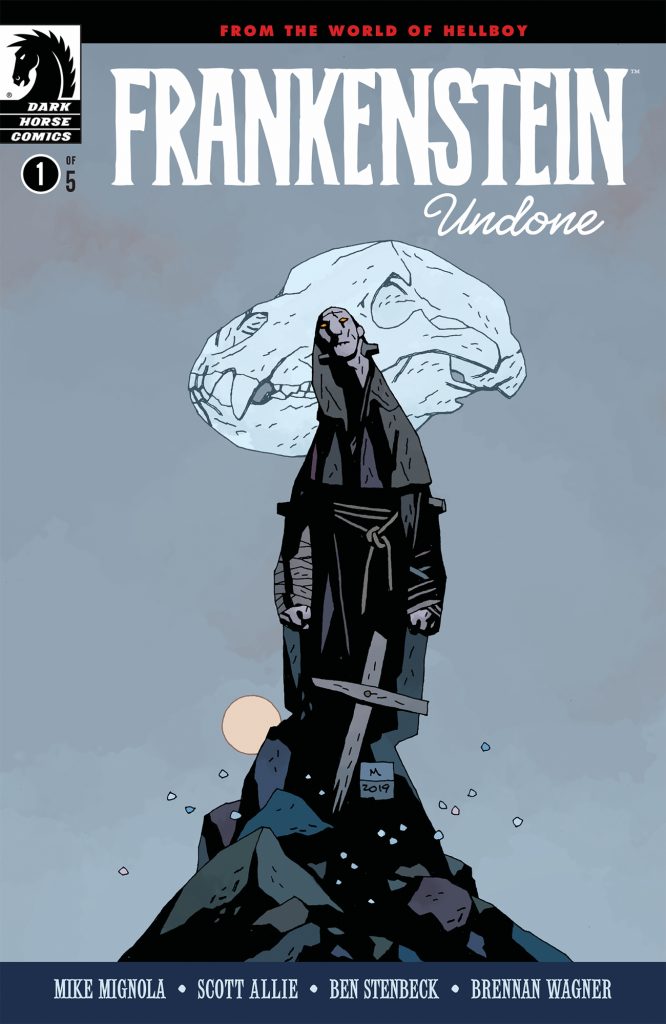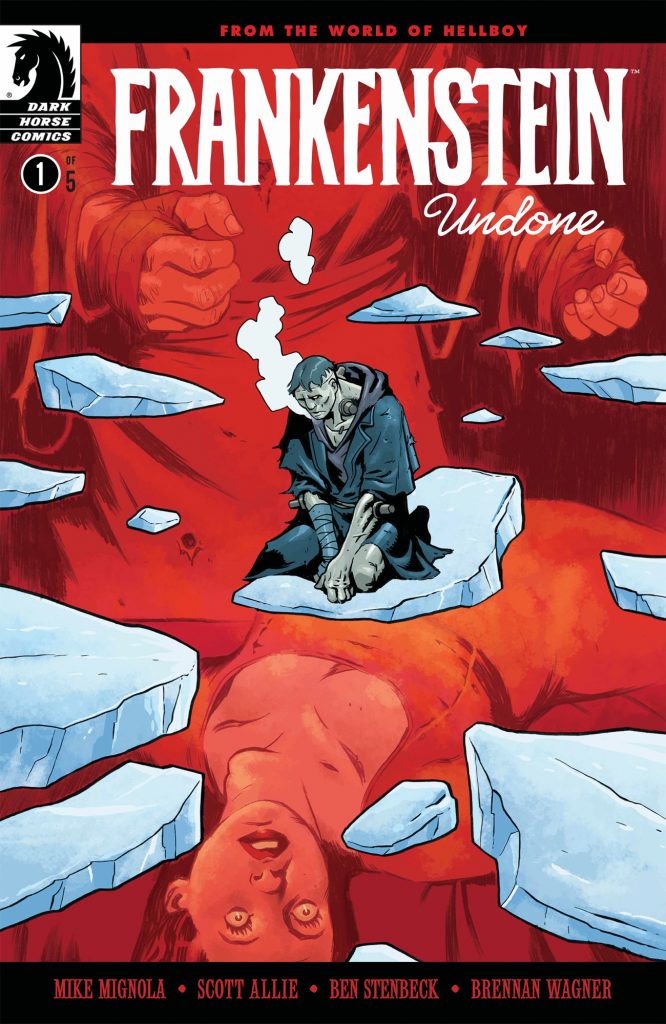
Story: Mike Mignola & Scott Allie
Art: Ben Stenbeck
Colors: Brennan Wagner
Letter: Clem Robins
Cover: Ben Stenbeck
Alternate Cover: Mike Mignola with Dave Stewart
Publisher: Dark Horse Comics
Available: Now!
Price: $3.99
Out this month is issue one of Frankenstein Undone, from Dark Horse. Written by the powerhouse team of Mike Mignola and Scott Allie and drawn by long-time Mignola collaborator Ben Stenbeck, this five-issue arc picks up at the end of Mary Shelley’s novella and fills the gap to the creature’s (named Frankenstein, after his father, in the way of his people, in this issue) appearance in 2015’s Frankenstein Underground.
His creator/father deceased, his thirst for vengeance sated—though his soul in no way satisfied—the creature heads north. North, even from the frigid waste The Modern Prometheus deposited him unto, to ultimately find the solace of death. Wracked with guilt over having slain so many innocents, the creature can see no other end for him, no other meaning.
Until he happens upon a family of polar bears, a mother and her cubs…and despite himself, earns the mother’s trust. His days, of a sudden, are filled with the primal existence of life on the tundra. Fighting for food, for warmth, for sustenance. For trust, and meaning, and love. His soul begins a rejuvenation, his meaning found.
But the creature is in Hellboy’s world now, and monsters abound.
Tragedy strikes. The creature, rising from his slumber, wakes to find one of the cubs missing. A sickening crack resonates in the distance. Cresting a mound before a nearby valley, the creature finds the cub, his brother, crushed and being eaten by a massive yeti. Battle ensues, and the creature is no match for the savage beast.
Yet his earthbound time is still not done. He finds himself saved, physically at least, his wounds tended by the mysterious shaman Arobas. The two quickly bond, the creature, soon christened “Frankenstein,” seeking counsel from the wise northman, who seems happy to provide his new charge guidance.
And then…
Well, and then, you’ve got some reading to do, is what.
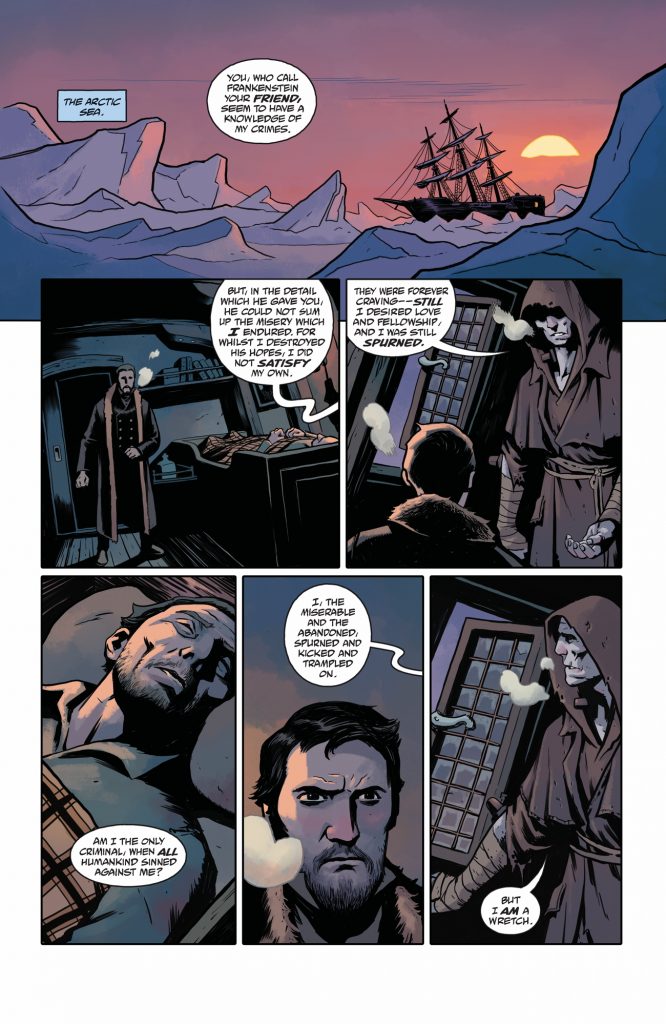
As he did in Frankenstein Underground, Mignola does a masterful job maintaining the voice of the creature as written by Shelley—one of, if not the most misunderstood and frankly (sorry, couldn’t resist) misinterpreted monsters in all of literature. Thanks, Universal Studios. But in all seriousness—thank you Mike Mignola and Scott Allie. We are treated to a deeply complex, ever-thinking “creature” who is far more human than the humans his world has been populated with so far, and his story here is much more a philosophical search for meaning than monsters fighting for supremacy.
And in true Mignola fashion, he trusts the images (in this case, Stenbeck’s) to do much of the heavy storytelling. Verbiage is minimized (to the degree that it can be). In the middle of the book, nearly five full pages pass without a written word, as the growing bond between the creature and his adoptive ursine family grows, evolves and entrenches.
Beautiful work.
And Stenbeck is, as per usual, up to the task. If you’ve not experienced it, his art is highly reminiscent of Mignola’s own, perhaps less stylized, with simple and bold lines that fit well in the world of Hellboy. If anything, his style even better captures the raw, savage beauty of the polar north than Mignola’s constant shadow and dark (and trust me, that’s no knock on Mignola!). The characters, despite their animalistic or monstrous appearance, are infused with humanity, and the reader can’t help but find themselves bonding with them.
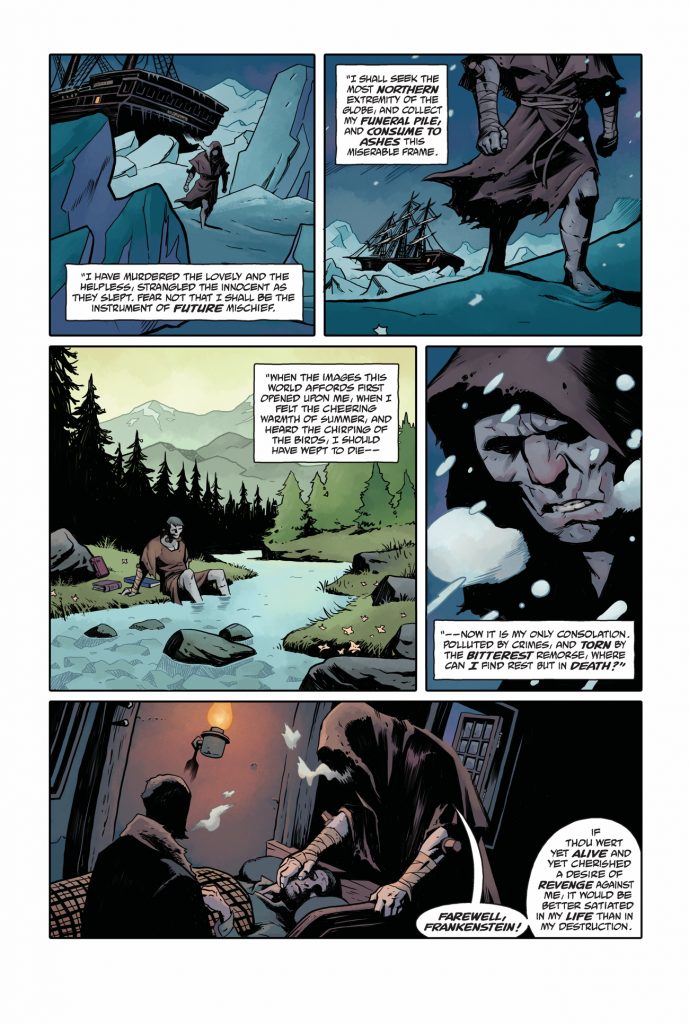
And Stenbeck’s lines are deeply enhanced by Wagner’s colors. Wagner employs a rich palette of purples, blues, greens and oranges, infusing great life to the frozen waste that is the story’s setting. Given a white canvas and told to paint a polar bear standing on a glacier in a blizzard, he found a way to cover the entire spectrum, and made it all look natural and inviting: no mean task. Kudos for a job well done.
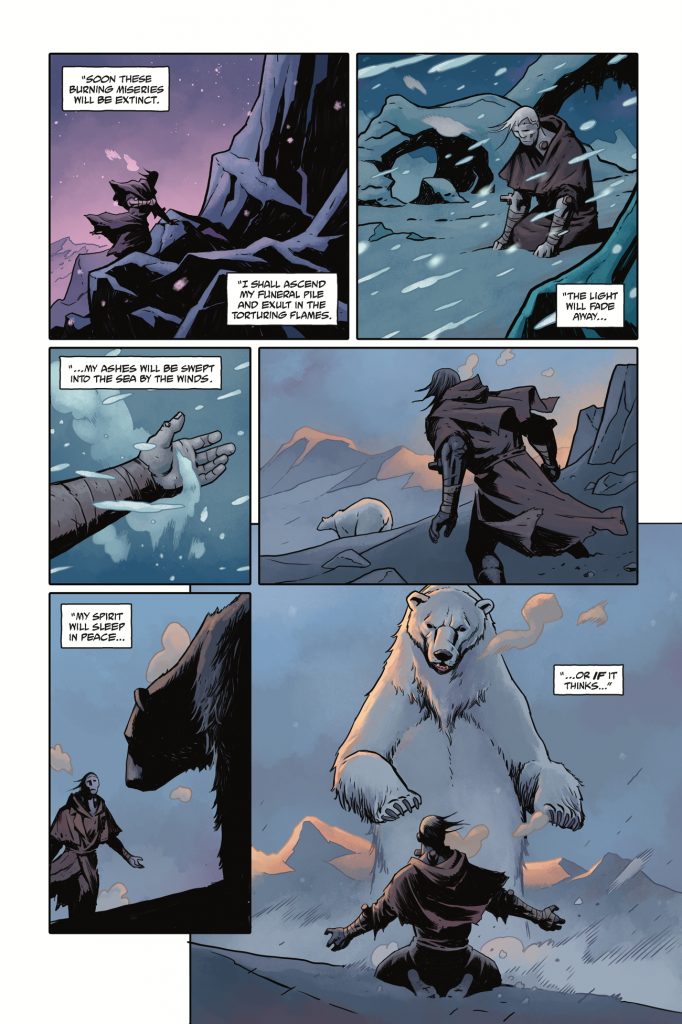
I’m not sure whether to feel bad for Clem Robins, that there is so little dialogue through so much of the book, or give him a nod for collecting full-time fee for part-time work (yes, I am very much kidding; put your lawyer’s card back in the rolodex). What spoken words there are, however, and what thought boxes (Frankie can get a little verbose at times; he was a Victorian creature after all) are handled with grace and ease. Robins’ employment of sound effects, though—especially in those wordless passages—is where he really earns his keep, though: the effects become a part of the art itself, and inform more than any dialogue or thought box could have the growing bond of the creature and his new family.
All in all, an excellent first issue, and one that opens an intriguing slate of possible paths for the story’s evolution.
If you’d like to check in on Frankenstein’s backstory yourself, you can track it down on Amazon, comiXology, darkhorse.com or best of all: your local comic store.
Score: 13 (of 13)
Review by Andy Patch, thePullbox.com
